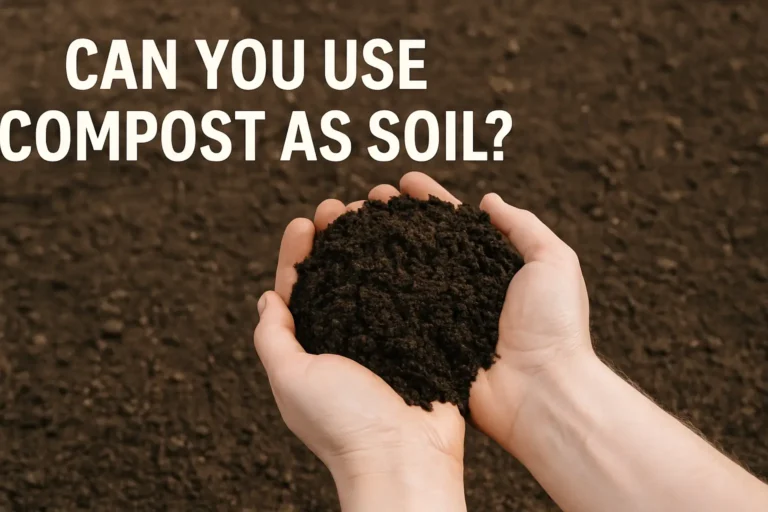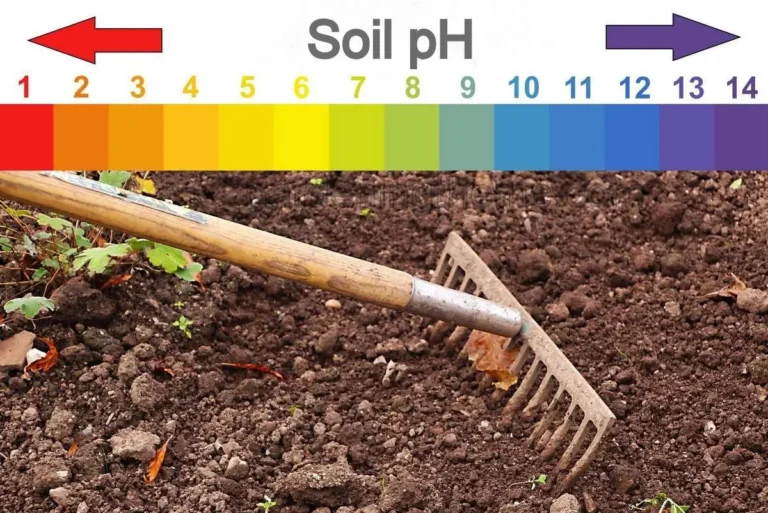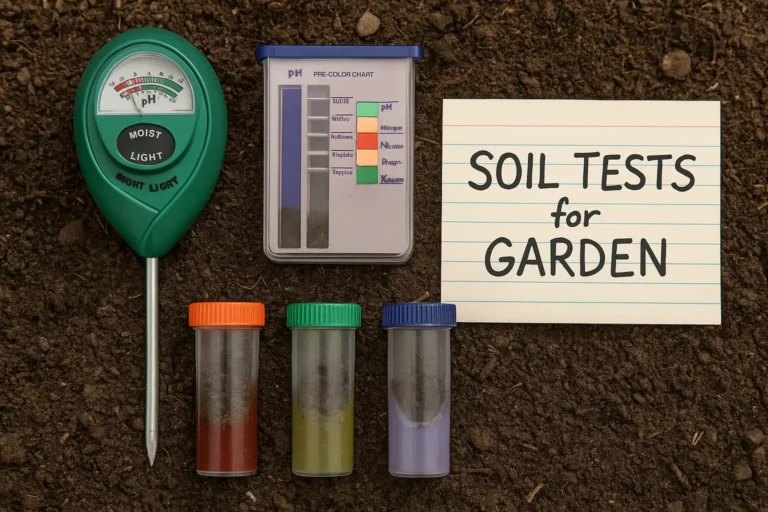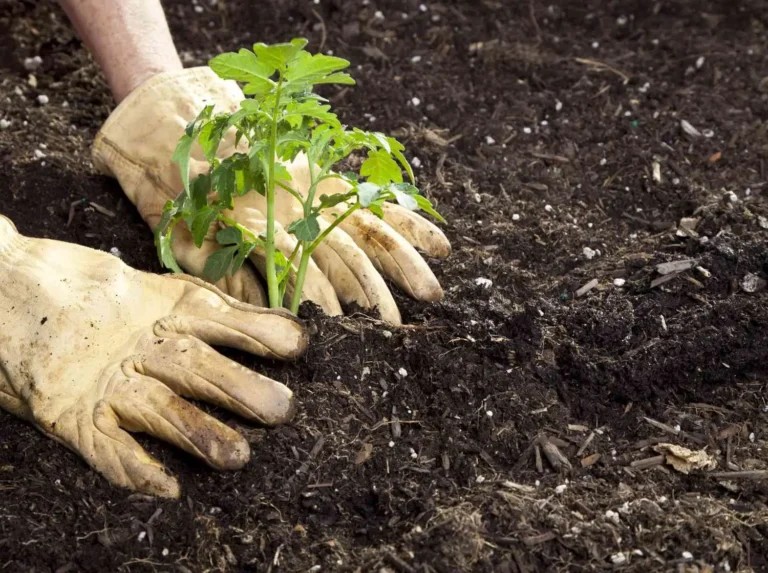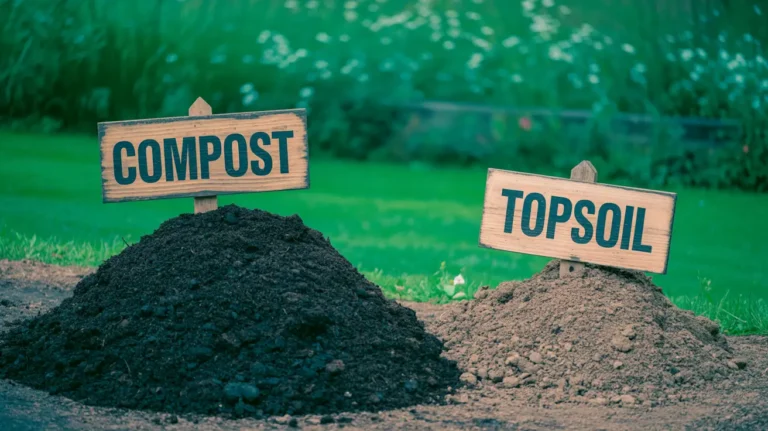The Definitive Guide to Soil Permeability: Understanding, Measurement, and Impact
Welcome to the definitive guide on soil permeability, a critical concept often overlooked but profoundly impactful in various fields, from civil engineering to agriculture and environmental management. Understanding how water moves through soil isn’t just academic; it’s essential for building stable structures, cultivating healthy crops, and protecting our precious groundwater resources.
In this comprehensive article, we’ll delve deep into the science of soil permeability, exploring its fundamental principles, the factors that influence it, and the methods used to measure it. We’ll also uncover its far-reaching importance across diverse industries and provide actionable insights for managing soil permeability effectively. Prepare to unlock the secrets of this vital soil property and gain a master-level understanding that will empower your projects and practices.
What is Soil Permeability? A Fundamental Concept Explained
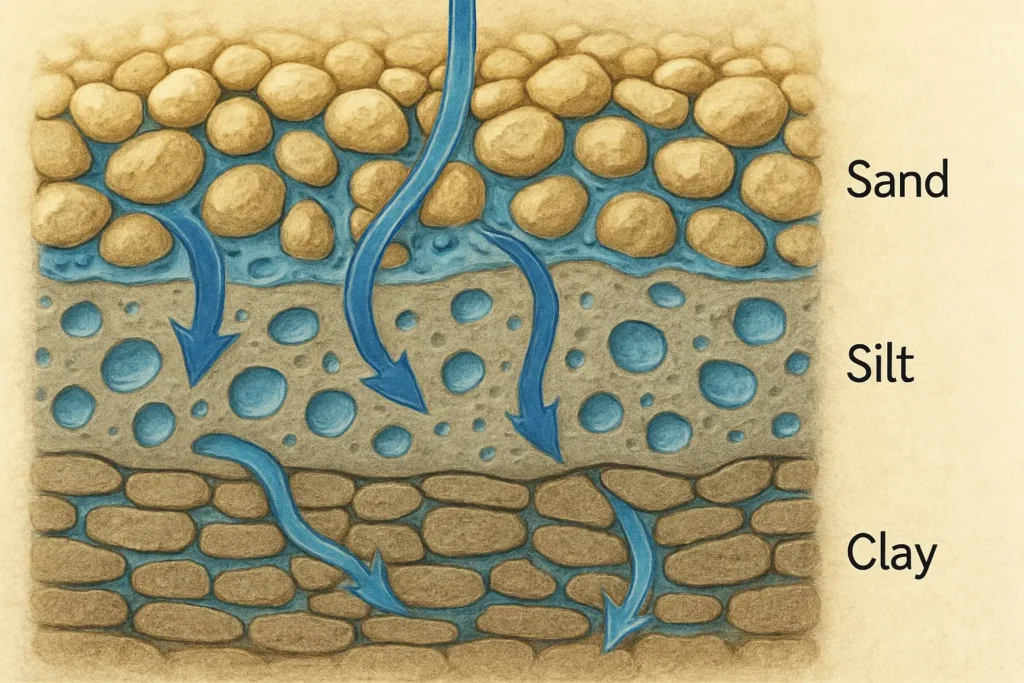
Why Does Soil Permeability Matter? Real-World Implications
The significance of soil permeability extends across a multitude of disciplines, impacting everything from the stability of our built environment to the productivity of our agricultural lands and the health of our ecosystems. For civil engineers, understanding soil permeability is paramount for designing stable foundations, effective drainage systems, and safe embankments. In agriculture, it dictates irrigation efficiency, nutrient retention, and root development, directly influencing crop yields.
Beyond these direct applications, soil permeability plays a vital role in environmental protection. It governs the rate at which contaminants can spread through groundwater, influences stormwater runoff and infiltration, and is a key consideration in the design of waste disposal sites. In essence, mastering soil permeability is not just about technical knowledge; it’s about building a more sustainable and resilient future.
The Science Behind the Flow: Understanding Soil Permeability
To truly grasp soil permeability, we must delve into the underlying scientific principles that govern water movement through porous media. This journey begins with Darcy’s Law, a foundational concept in hydrogeology and soil mechanics.
Darcy’s Law: The Guiding Principle of Water Movement in Soil
At the heart of understanding soil permeability lies Darcy’s Law, an empirical relationship formulated by Henry Darcy in the mid-19th century. This law describes the flow of fluid through a porous medium, such as soil, under a hydraulic gradient. Simply put, it states that the velocity of fluid flow is directly proportional to the hydraulic gradient and the permeability of the medium.
Mathematically, Darcy’s Law is expressed as: V = k * i
Where:
- V is the apparent fluid velocity (or discharge velocity) through the medium.
- k is the coefficient of permeability (or hydraulic conductivity), representing the ease with which fluid flows through the soil.
- i is the hydraulic gradient, which is the change in hydraulic head over a given distance. This represents the driving force for water movement.
This law highlights that water will only flow through soil if there’s a pressure difference, and the rate of flow is directly linked to the magnitude of that difference. It also underscores the importance of the soil’s inherent properties, encapsulated by the ‘k’ value, in determining how quickly water moves through it. While seemingly simple, Darcy’s Law forms the basis for countless calculations and designs in geotechnical engineering and hydrology.
For a deeper dive into how soil properties are measured, explore our article on Understanding Soil Tests.
Key Factors Influencing Soil Permeability
Soil permeability is not a static property; it’s a dynamic characteristic influenced by a complex interplay of physical, chemical, and biological factors. Understanding these influences is crucial for predicting soil behavior and implementing effective management strategies. Let’s explore the primary factors that dictate how easily water moves through soil.
Soil Texture and Particle Size: The Foundation of Flow
One of the most significant determinants of soil permeability is its texture, which refers to the relative proportions of sand, silt, and clay particles. Particle size plays a direct role in creating the pore spaces through which water flows. Generally, soils with larger particles, like sands and gravels, tend to have higher permeability, while fine-grained soils, such as clays, exhibit lower permeability.
Consider coarse-grained soils like sand. Their larger particles create larger, more interconnected pore spaces, allowing water to pass through rapidly. In contrast, clay particles are microscopic and plate-like, packing together tightly to form very small, often discontinuous pores. This structure significantly impedes water movement, resulting in very low permeability. The relationship is not always linear, but the general principle holds: larger particles usually mean higher permeability.
Soil Structure and Aggregation: Creating Pathways for Water
Beyond individual particle size, the way soil particles are arranged into aggregates (or peds) profoundly impacts permeability. Soil structure refers to the arrangement of these aggregates, which can vary from granular to blocky, prismatic, or platy. A well-developed, stable soil structure with abundant, well-connected aggregates promotes higher permeability.
Good soil structure creates a network of macropores (large pores) and micropores (small pores). Macropores, often formed by root channels, earthworm burrows, or the spaces between stable aggregates, act as highways for rapid water infiltration and drainage. Micropores, found within aggregates, hold water for plant uptake. Soils with strong aggregation and a diverse pore network facilitate efficient water movement, while poorly structured soils can become compacted and impede flow.
Void Ratio and Porosity: The Space for Water to Move
Porosity is the total volume of pore spaces within the soil, while void ratio (e) is the ratio of the volume of voids to the volume of soil solids. Both are intimately linked to permeability. Intuitively, a soil with more pore space generally has the potential for higher permeability, as there’s more room for water to move.
However, it’s not just the quantity of pore space that matters, but also its quality—specifically, the size, shape, and connectivity of the pores. A soil with a high total porosity but predominantly very small, disconnected pores (like some clays) will still have low permeability. Conversely, a soil with slightly lower total porosity but large, well-connected pores (like a sandy loam) can exhibit higher permeability. The relationship between void ratio and permeability is often exponential, meaning a small change in void ratio can lead to a significant change in permeability.
To calculate the permeability of soil for specific projects, utilize our Soil Permeability Index Calculator.
Degree of Saturation: Water Content and Its Role
The degree of saturation refers to the proportion of pore space filled with water. This factor significantly influences permeability, particularly in unsaturated soils. When soil is fully saturated, all pore spaces are filled with water, allowing for maximum potential flow. However, in partially saturated soils, air pockets occupy some of the pore space.
These entrapped air bubbles can block the pathways for water movement, effectively reducing the soil’s permeability. This is why the permeability of a partially saturated soil is considerably lower than that of the same soil when fully saturated. Darcy’s Law, in its simplest form, is strictly applicable only to saturated flow, highlighting the complexity introduced by air within the soil matrix.
Organic Matter Content: Nature’s Influence on Permeability
Organic matter plays a vital role in enhancing soil permeability, particularly in agricultural and natural ecosystems. Decomposing plant and animal residues contribute to the formation of stable soil aggregates, which, as discussed, improve soil structure and create larger, more continuous pore spaces. Organic matter also acts like a sponge, improving the soil’s water-holding capacity while simultaneously facilitating drainage.
Soils rich in organic matter tend to be more permeable and resilient to compaction. This is a key reason why sustainable farming practices, which emphasize increasing soil organic matter, are so beneficial for soil health and water management. The sticky substances produced during organic matter decomposition bind soil particles together, creating a more open and permeable soil matrix.
Compaction: The Human Impact on Soil Permeability
Compaction, often a result of human activities like heavy machinery traffic, construction, or excessive foot traffic, is a major cause of reduced soil permeability. When soil is compacted, its particles are pressed together, reducing the total volume of pore space and, more critically, destroying the larger, interconnected macropores. This leads to a significant decrease in permeability, making it difficult for water to infiltrate and drain.
Compacted soils can lead to increased surface runoff, erosion, and waterlogging, negatively impacting plant growth and overall soil health. In civil engineering, compaction is intentionally used to create impermeable layers for specific applications, such as road bases or landfill liners. However, in other contexts, it\”s a detrimental process that requires careful management and mitigation.
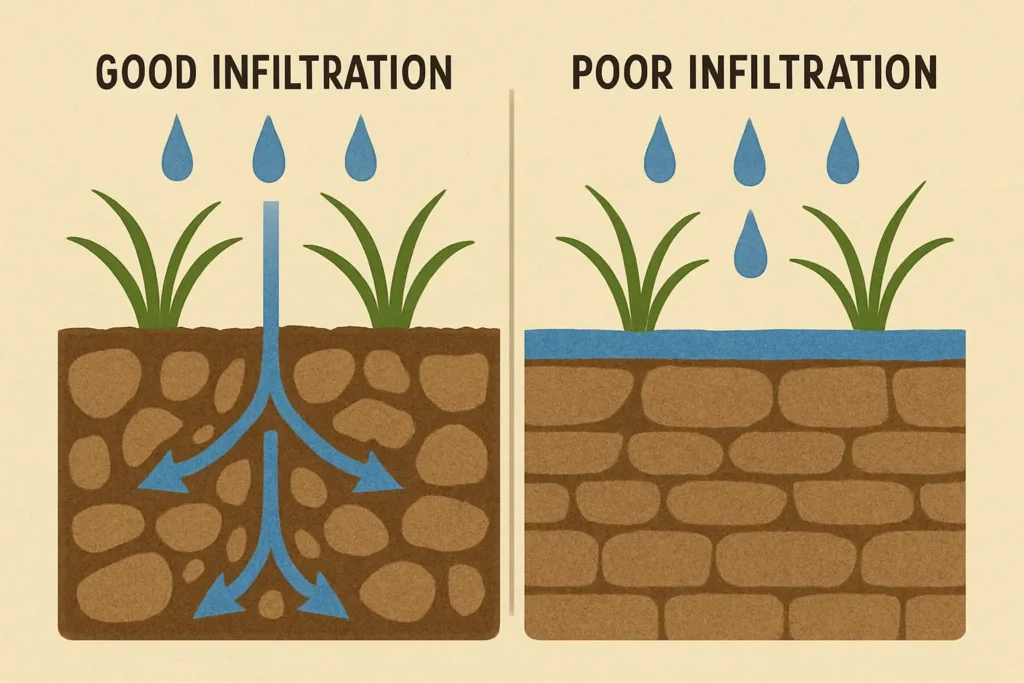
Stratification and Layering: Horizontal vs. Vertical Flow
Natural geological processes and human activities can lead to the formation of distinct layers or strata within the soil profile. These layers often have different textures, structures, and levels of compaction, which can significantly influence the direction and rate of water flow. It’s common for stratified soils to exhibit anisotropic permeability, meaning permeability varies with direction.
For instance, water may flow much faster horizontally along a permeable sand layer sandwiched between two less permeable clay layers than it would flow vertically through the clay. This phenomenon, known as horizontal permeability, can be many times greater than vertical permeability in stratified soils. Understanding these layering effects is crucial for accurate hydrological modeling and effective drainage design.
Impurities and Adsorbed Water: Hidden Obstacles to Flow
While less obvious, impurities in water and the presence of adsorbed water can also affect soil permeability. Fine particulate impurities suspended in water can gradually clog soil pores, reducing permeability over time. This is particularly relevant in irrigation systems where water quality can impact long-term soil health.
Adsorbed water refers to a thin layer of water molecules tightly bound to the surface of soil particles, especially clay minerals, due to electrostatic forces. This adsorbed layer is not free to move under gravity and effectively reduces the size of the pores available for water flow. In fine-grained soils, the volume occupied by adsorbed water can be significant, contributing to their inherently low permeability. This phenomenon is more pronounced in soils with a high specific surface area, such as clays.
Explore environmental considerations related to soil in Green Recycling Your Yard Debris.
Measuring Soil Permeability: Methods and Techniques
Accurately determining soil permeability is essential for various applications, from designing drainage systems to assessing groundwater flow. Both laboratory and field methods are employed, each with its advantages and limitations. The choice of method often depends on the soil type, project scale, and required precision.
Laboratory Testing: Precision in a Controlled Environment
Laboratory tests offer a controlled environment for measuring soil permeability, allowing for precise control over variables. These methods are typically performed on undisturbed or reconstituted soil samples collected from the field.
Constant Head Permeability Test: Ideal for Coarse-Grained Soils
The Constant Head Permeability Test is a common laboratory method used to determine the coefficient of permeability for coarse-grained soils, such as sands and gravels. In this test, a constant hydraulic head (water level difference) is maintained across a soil sample, and the volume of water flowing through the sample over a specific time is measured.
The apparatus typically consists of a permeameter tube holding the soil sample, with a constant water supply at the inlet and an overflow system at the outlet to maintain a steady head. By measuring the discharge volume, the length and cross-sectional area of the sample, and the hydraulic head, the coefficient of permeability can be calculated using Darcy\’s Law. This method is reliable for soils where water flows relatively quickly.
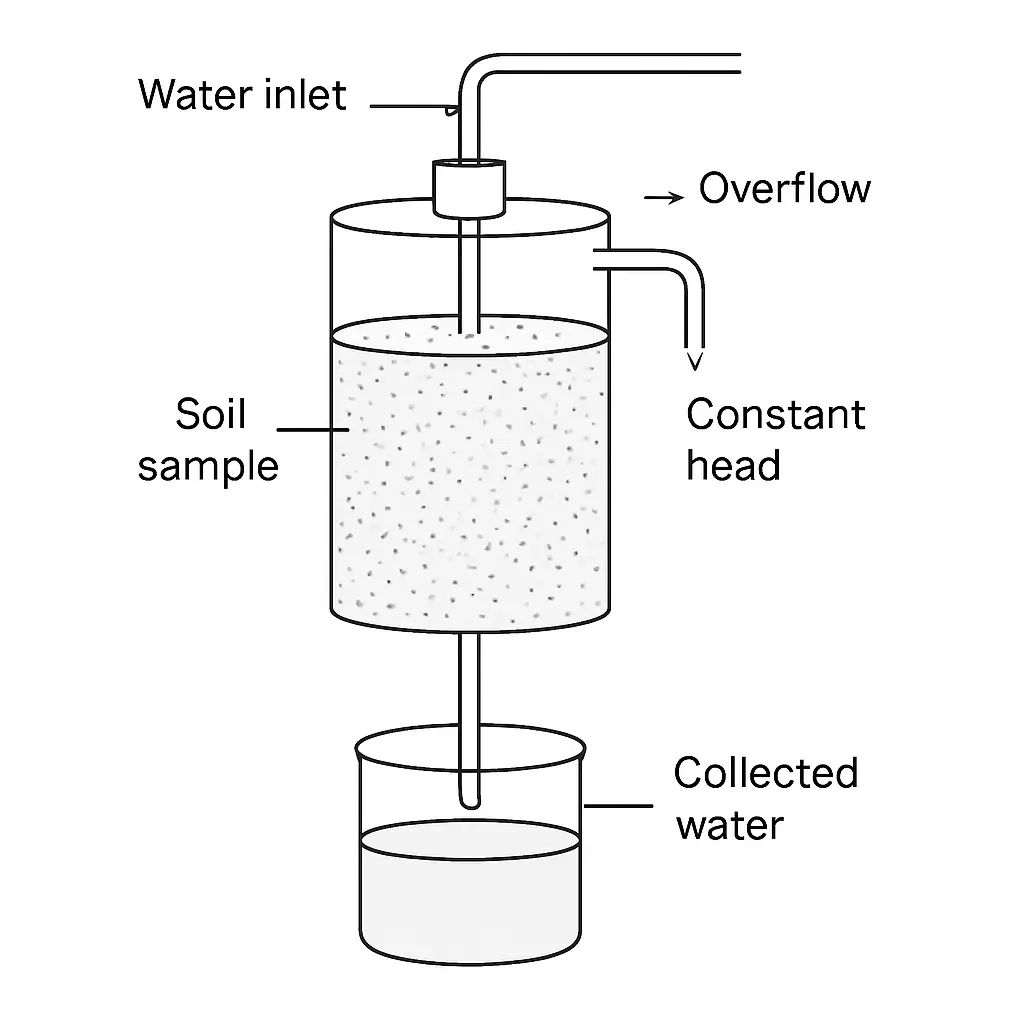
Falling Head Permeability Test: Suited for Fine-Grained Soils
For fine-grained soils like silts and clays, where water flows much slower, the Falling Head Permeability Test is more appropriate. In this method, the hydraulic head is not kept constant but is allowed to decrease as water flows through the soil sample. The test involves measuring the time it takes for the water level in a standpipe connected to the sample to drop between two specified levels.
The falling head test is more sensitive to small flow rates characteristic of low-permeability soils. The calculation of the permeability coefficient involves the dimensions of the standpipe, the soil sample, and the initial and final water levels over the measured time interval. This method provides a practical way to assess the permeability of soils that would be difficult to test with a constant head apparatus due to their slow drainage rates.
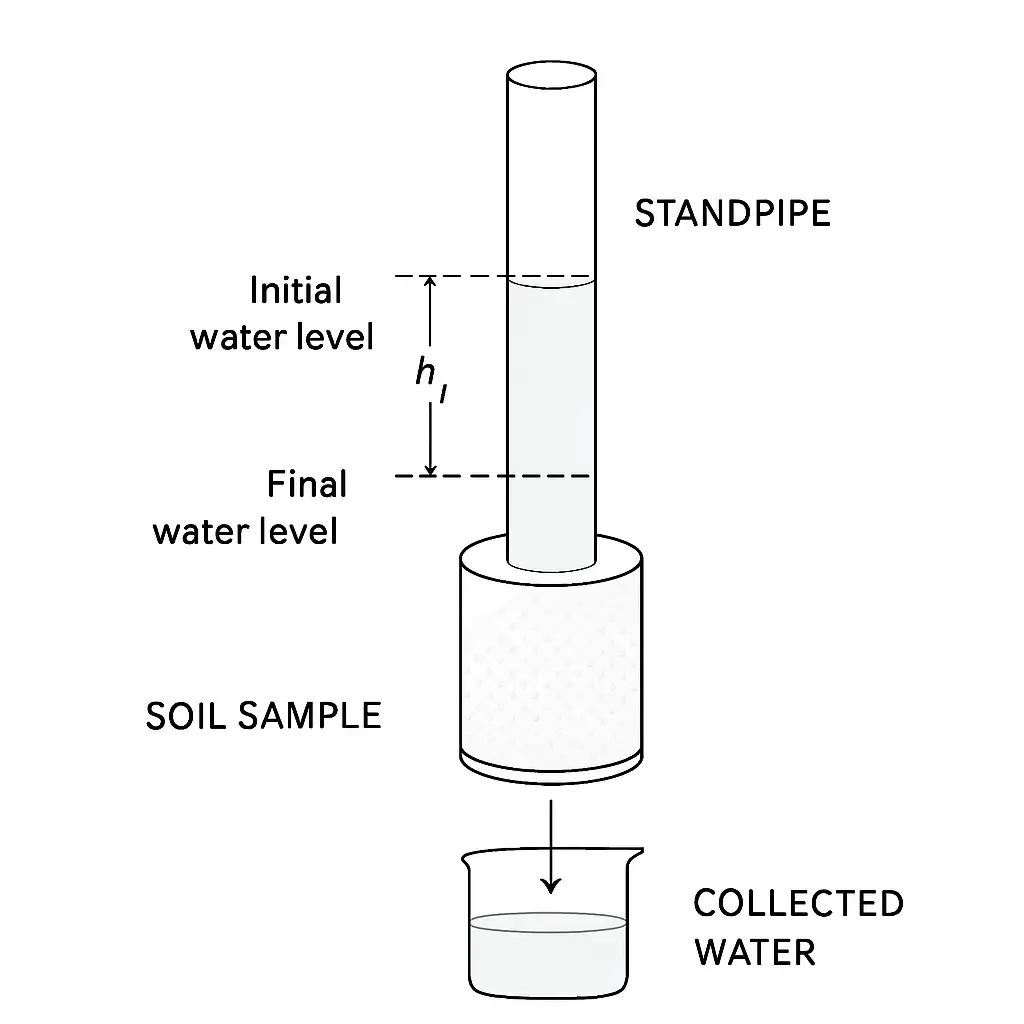
Field Testing: Real-World Insights and Practical Applications
While laboratory tests provide precise measurements under controlled conditions, field tests offer the advantage of assessing soil permeability in its natural, undisturbed state. This is particularly important because soil properties can vary significantly in situ due to layering, natural fissures, and macro-pores that might not be captured in small laboratory samples.
Simple Percolation Tests: Quick Assessments for Drainage
Simple percolation tests are basic field methods often used for quick, qualitative assessments of soil drainage, particularly for septic system design or garden planning. These tests typically involve digging a hole, filling it with water, and observing how quickly the water level drops. The rate of drop provides an indication of the soil’s permeability.
While easy to perform, simple percolation tests offer limited quantitative accuracy and are highly influenced by initial soil moisture content and the presence of a smear layer from digging. They are best used for preliminary evaluations rather than precise engineering design, but they provide valuable immediate insights into a site’s drainage characteristics.
Pumping-Out Tests: Large-Scale Evaluation for Engineering Projects
For large-scale civil engineering projects, such as dam construction or groundwater resource assessment, pumping-out tests (also known as aquifer tests) are employed to determine the in-situ permeability of a large mass of soil. This method involves pumping water from a central well at a constant rate and observing the drawdown (decrease in water level) in surrounding observation wells.
By analyzing the relationship between pumping rate, drawdown, and distance from the pumping well, engineers can calculate the average permeability of the aquifer or soil layer. Pumping-out tests are more complex and costly than other methods but provide a highly representative measure of permeability over a significant area, accounting for natural heterogeneities and macro-permeability effects.
Advanced Field Methods: Ensuring Accuracy and Representativeness
Beyond simple percolation and pumping tests, various advanced field methods are available to ensure greater accuracy and representativeness in permeability measurements. These include:
- Borehole Permeability Tests (e.g., Lugeon Test): These tests involve injecting water into a borehole under pressure and measuring the rate of water loss. They are commonly used in rock mechanics but can also be adapted for soils, particularly for assessing permeability at different depths.
- Infiltrometer Tests: These devices measure the rate at which water infiltrates the soil surface under controlled conditions. They can be used to determine saturated hydraulic conductivity and provide insights into the soil’s ability to absorb rainfall or irrigation water.
- Tracer Tests: Involving the introduction of a tracer (e.g., dye or salt) into the soil and monitoring its movement, tracer tests provide direct information on water flow paths and velocities, offering a more dynamic understanding of permeability.
These advanced methods, while requiring specialized equipment and expertise, provide more robust data for critical engineering and environmental applications, ensuring that designs are based on accurate, real-world soil behavior.
Understand the nuances of soil composition by reading Topsoil vs Compost.
The Critical Importance of Soil Permeability Across Industries
Soil permeability is not merely a theoretical concept; it’s a fundamental property with profound practical implications across a wide spectrum of industries. Its influence shapes design decisions, impacts environmental outcomes, and dictates the success of various human endeavors. Let’s explore its critical importance in detail.
Civil Engineering: Foundation Stability, Drainage, and Construction
In civil engineering, soil permeability is a cornerstone consideration for almost every project involving interaction with the ground. From the smallest residential foundation to massive infrastructure projects, understanding how water moves through the soil is paramount for safety, stability, and longevity.
Foundation Stability and Settlement: Building on Solid Ground
The stability of any structure begins with its foundation, and the behavior of the underlying soil is directly linked to its permeability. In compressible soils, such as clays, the rate at which a structure settles after loading is heavily dependent on how quickly water can drain out of the soil pores. Low-permeability clays will consolidate slowly over extended periods, leading to long-term settlement issues if not properly accounted for in design.
Conversely, in highly permeable soils like sands, settlement occurs almost immediately upon loading as water can dissipate rapidly. Furthermore, water infiltration can significantly reduce the shear strength of foundation soils, potentially leading to bearing capacity failures. Impervious soil layers can also trap water, leading to hydrostatic pressure buildup, which can exert uplift forces on foundations or retaining walls, compromising their stability. Therefore, accurate permeability assessment is vital for designing foundations that can withstand both immediate and long-term stresses.
Slope Stability and Landslides: Preventing Catastrophic Failures
Soil permeability is a critical factor in the stability of natural and engineered slopes. Low-permeability soils within a slope can trap water, leading to an increase in pore water pressure. This elevated pore pressure reduces the effective stress between soil particles, thereby decreasing the soil’s shear strength and significantly increasing the risk of landslides or slope failures. The added weight of trapped water also contributes to instability.
While highly permeable soils generally promote slope stability by facilitating rapid drainage, they can also be susceptible to internal erosion (piping) under high seepage forces, which can undermine the slope from within. Engineers must carefully balance these factors, often incorporating engineered drainage systems to manage pore water pressures and enhance slope stability, especially in areas prone to heavy rainfall or seismic activity.
Drainage Systems: Managing Water for Infrastructure Longevity
Effective drainage is essential for the longevity and performance of virtually all civil infrastructure. Soil permeability directly dictates the design and effectiveness of drainage systems, whether for roads, buildings, or urban areas. Permeable materials are intentionally used in drainage layers to collect and convey water away from critical areas, preventing water accumulation and its associated problems.
For instance, in road construction, permeable sub-base layers are crucial for preventing the saturation of the subgrade, which can lead to a loss of strength and structural damage to the pavement (e.g., rutting and cracking). Without adequate drainage, water can weaken the soil, accelerate freeze-thaw damage, and reduce the overall lifespan of the infrastructure. Understanding the permeability of surrounding soils allows engineers to design efficient and sustainable drainage solutions.
For insights into managing soil for specific gardening needs, see Best Soil for Raised Beds.
Roadways and Pavements: Ensuring Durable Transportation Networks
The performance and durability of roadways and pavements are intimately linked to the permeability of the underlying subgrade and base layers. A saturated subgrade, often a result of low permeability or inadequate drainage, loses its bearing capacity, leading to premature pavement distress and failure. Water trapped beneath the pavement can also cause frost heave in cold climates, further damaging the road structure.
Engineers select and design granular base and sub-base materials with specific permeability characteristics to ensure rapid drainage and prevent water accumulation. In some cases, geotextiles and geogrids are incorporated to enhance drainage, provide separation, and reinforce the soil, thereby improving the long-term performance and reducing maintenance costs of transportation networks. The goal is to create a pavement system where water can quickly escape, preserving the strength and integrity of the supporting soil layers.
Agriculture and Land Management: Optimizing Crop Growth and Water Use
In agriculture, soil permeability is a cornerstone of healthy plant growth, efficient water management, and sustainable land use. It directly influences how water and nutrients are delivered to plant roots and how effectively excess water is removed from the root zone.
Irrigation Efficiency: Delivering Water Where It’s Needed Most
For irrigated agriculture, soil permeability is a critical factor in determining irrigation efficiency. Soils with very low permeability can lead to excessive surface runoff and waterlogging, as water cannot infiltrate quickly enough. This results in wasted water, uneven water distribution, and potential for anaerobic conditions that harm plant roots.
Conversely, excessively high permeability can lead to rapid drainage beyond the root zone, resulting in water and nutrient losses through leaching. Optimal permeability ensures that irrigation water infiltrates at a rate that matches the soil’s capacity, allowing for uniform wetting of the root zone and minimizing waste. Understanding a field’s permeability helps farmers select appropriate irrigation methods and schedules to maximize water use efficiency.
Assess potential risks with our Soil Contamination Risk Estimator.
Nutrient Leaching and Runoff: Protecting Soil Health and Water Quality
Soil permeability directly impacts the fate of nutrients and agricultural chemicals applied to the land. In highly permeable soils, nutrients (especially nitrates) and pesticides can leach rapidly through the soil profile and into groundwater, leading to contamination of drinking water sources. This not only represents an economic loss for farmers but also poses significant environmental risks.
On the other hand, in very low-permeability soils, surface runoff can be a major issue. When water cannot infiltrate, it flows over the surface, carrying away topsoil, nutrients, and pesticides into surface water bodies, contributing to eutrophication and other forms of water pollution. Managing soil permeability through practices like cover cropping, reduced tillage, and organic matter amendments can help strike a balance, promoting nutrient retention while minimizing harmful runoff and leaching.
Soil Aeration and Root Development: Breathing Life into Plants
Soil permeability is intrinsically linked to soil aeration, which is the exchange of gases between the soil and the atmosphere. Plant roots, like all living organisms, require oxygen for respiration. In poorly permeable soils, especially those that are waterlogged, oxygen can become depleted, creating anaerobic conditions that inhibit root growth, nutrient uptake, and the activity of beneficial soil microorganisms.
Well-aerated soils, facilitated by good permeability, ensure a continuous supply of oxygen to the root zone, promoting vigorous root development and overall plant health. This is particularly important for crops sensitive to waterlogging. Practices that improve soil structure and permeability, such as incorporating organic matter and minimizing compaction, directly contribute to better soil aeration and, consequently, healthier plants.
Environmental Applications: Groundwater Protection and Waste Management
Beyond engineering and agriculture, soil permeability is a fundamental consideration in various environmental applications, particularly those related to water resource protection and waste management. Its role in controlling the movement of water and contaminants through the subsurface is paramount.
Groundwater Contamination: Preventing the Spread of Pollutants
One of the most critical environmental implications of soil permeability is its influence on groundwater contamination. Groundwater is a vital source of drinking water globally, and its quality is directly threatened by pollutants that infiltrate the soil. The permeability of the overlying soil and geological strata dictates how quickly contaminants from spills, leaky underground storage tanks, or agricultural runoff can reach and spread within an aquifer.
Highly permeable soils allow contaminants to migrate rapidly, making detection and remediation challenging. Conversely, low-permeability layers can act as natural barriers, slowing down contaminant transport. Environmental engineers and hydrogeologists rely heavily on permeability data to assess contamination risks, design monitoring networks, and implement effective remediation strategies to protect groundwater resources.
Waste Disposal and Landfills: Containing Hazardous Materials
In the design and operation of waste disposal facilities, particularly landfills, controlling permeability is of utmost importance to prevent environmental pollution. Modern landfills are engineered with multi-layered liner systems designed to minimize the leakage of leachate—a highly contaminated liquid generated as waste decomposes and water percolates through it. These liner systems typically include layers of low-permeability compacted clay and geomembranes (synthetic liners).
The objective is to create an impermeable barrier that prevents leachate from seeping into the underlying soil and groundwater. Similarly, in the context of hazardous waste containment, understanding the permeability of surrounding soils is crucial for selecting appropriate sites and designing containment structures that can effectively isolate pollutants from the environment. Permeability assessment ensures that waste is safely contained, protecting public health and ecosystems.
Stormwater Management: Sustainable Solutions for Urban Areas
With increasing urbanization, effective stormwater management has become a significant environmental challenge. Impervious surfaces like roads, rooftops, and parking lots prevent natural infiltration, leading to increased runoff, flash flooding, and pollution of surface waters. Soil permeability plays a key role in designing sustainable stormwater solutions, often referred to as Green Infrastructure or Low Impact Development (LID).
These solutions, such as rain gardens, permeable pavements, and infiltration basins, rely on the soil’s ability to absorb and filter stormwater runoff. By promoting infiltration, these systems reduce the volume of runoff, replenish groundwater, and remove pollutants naturally. Understanding the permeability of urban soils is essential for siting and designing these features effectively, transforming stormwater from a problem into a valuable resource and contributing to more resilient and livable cities.
Discover how soil health impacts your lawn in Healthy Lawn Good Soil.
Enhancing and Managing Soil Permeability: Practical Solutions
Given the widespread importance of soil permeability, various strategies are employed to either enhance or reduce it, depending on the specific application and desired outcome. These practical solutions range from simple agricultural practices to complex engineering interventions.
Improving Permeability: Strategies for Better Drainage
In many contexts, particularly in agriculture and landscape design, the goal is to improve soil permeability to facilitate better drainage, aeration, and water infiltration. Several effective strategies can achieve this.
Amending Soil with Organic Matter: A Natural Boost
One of the most effective and sustainable ways to improve soil permeability is by increasing its organic matter content. Incorporating compost, well-rotted manure, or other organic amendments into the soil enhances aggregation, creating more stable soil structures and larger, more continuous pore spaces. Organic matter also improves water retention while simultaneously promoting drainage, making it a win-win for soil health.
Regular additions of organic matter foster a thriving soil microbial community, which further contributes to aggregate stability. This natural approach not only boosts permeability but also improves overall soil fertility, nutrient cycling, and resilience to compaction, leading to healthier plants and more productive land.
Mechanical Aeration and Tillage: Breaking Up Compaction
For compacted soils, mechanical aeration and strategic tillage can be employed to break up dense layers and improve permeability. Aeration involves creating small holes or slits in the soil, often using specialized equipment like core aerators, to alleviate compaction and create pathways for water and air. This is a common practice in lawns and sports fields.
While excessive or improper tillage can be detrimental, strategic tillage, such as subsoiling or chisel plowing, can break up compacted layers (e.g., hardpans) deep within the soil profile without completely inverting the soil. This helps to restore macropores and improve vertical water movement. However, it’s crucial to use these methods judiciously to avoid long-term damage to soil structure.
Incorporating Coarse Aggregates: Creating More Pathways
In some engineered applications or highly problematic soils, incorporating coarse aggregates like sand or gravel can directly increase permeability. This approach is often used in construction to create drainage layers or to amend heavy clay soils to improve their drainage characteristics. By adding larger particles, the overall pore size and connectivity are increased, facilitating faster water movement.
This method is particularly effective when creating permeable sub-bases for roads, sports fields, or other areas where rapid drainage is essential. However, it’s important to ensure proper mixing and gradation to achieve the desired permeability without compromising other soil properties.
Reducing Permeability: When Less is More
Conversely, there are many situations where reducing soil permeability is the desired outcome, often for containment, water conservation, or structural stability. These strategies aim to create impermeable or low-permeability barriers.
Compaction Techniques: Increasing Density for Impermeability
As previously discussed, compaction reduces soil permeability by decreasing pore space and increasing density. In civil engineering, controlled compaction is a fundamental technique used to create low-permeability layers for various purposes. For example, in the construction of earth dams, canal liners, or landfill barriers, clay soils are compacted to specific densities and moisture contents to achieve very low permeability, minimizing seepage and leakage.
Heavy machinery, such as rollers and compactors, is used to apply pressure and consolidate the soil particles. The degree of compaction is carefully monitored to ensure that the desired permeability is achieved, creating a stable and impermeable barrier that prevents water movement.
Clay Liners and Geomembranes: Engineered Barriers
For applications requiring extremely low permeability, engineered barriers such as compacted clay liners and geomembranes are widely used. Compacted clay liners are constructed by carefully placing and compacting layers of clay soil to achieve a very low hydraulic conductivity. These natural barriers are effective in preventing the migration of liquids.
Geomembranes, on the other hand, are synthetic liners made from materials like high-density polyethylene (HDPE) or polyvinyl chloride (PVC). They provide an almost impermeable barrier and are extensively used in landfills, reservoirs, and hazardous waste containment facilities to prevent leakage. Often, geomembranes are used in conjunction with compacted clay liners to create a composite liner system, offering a robust, multi-layered defense against fluid migration.
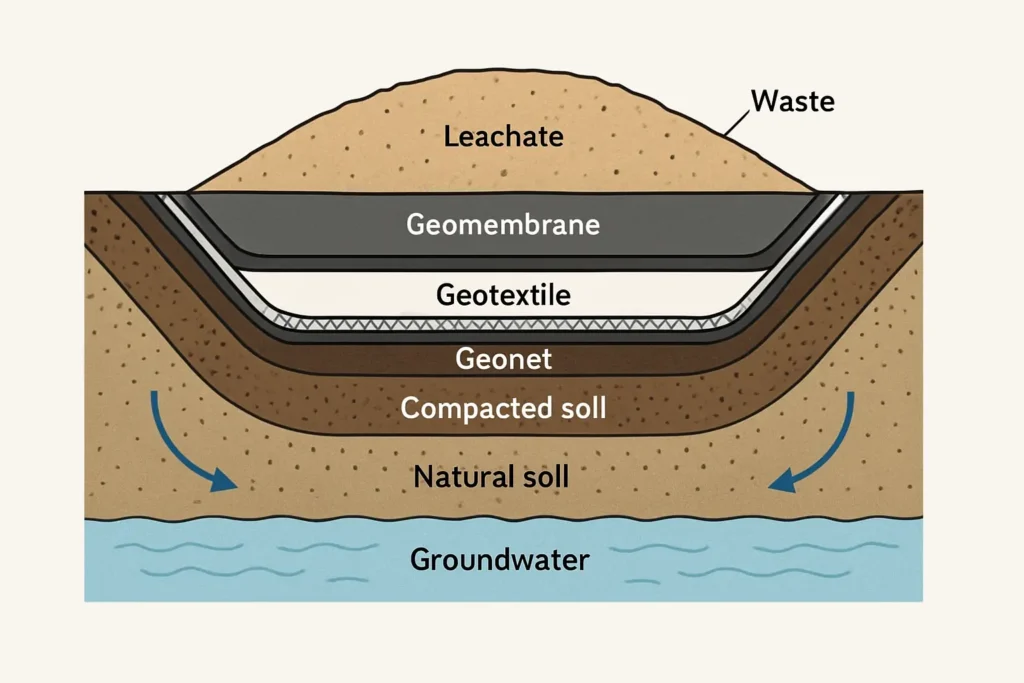
Geosynthetics: Modern Solutions for Soil Management
Geosynthetics are a class of synthetic products used in geotechnical engineering to improve soil properties and performance. While some geosynthetics, like geonets and geocomposites, are designed to enhance drainage and thus permeability, others are specifically used to reduce it or to provide separation and filtration functions that indirectly control water movement.
For instance, certain geotextiles can act as filters, allowing water to pass while preventing the migration of fine soil particles, which can help maintain the permeability of drainage layers. Geomembranes, as mentioned, are a type of geosynthetic primarily used for their impermeability. The strategic use of various geosynthetics offers modern, versatile solutions for managing soil permeability in a wide range of civil engineering and environmental projects, optimizing performance and extending the lifespan of structures.
Learn about different soil types and their impact on plant growth in Soil Types Plants.
Frequently Asked Questions About Soil Permeability
To further enhance your understanding, let’s address some common questions about soil permeability.
What is the difference between permeability and infiltration?
While often used interchangeably, permeability and infiltration are distinct but related concepts. Permeability refers to the ability of the soil to transmit fluids (its inherent property), while infiltration is the process by which water enters the soil surface and moves downward. Permeability is a measure of the soil’s capacity, whereas infiltration is the actual rate of water entry.
Think of it this way: a highly permeable soil has the potential for high infiltration rates. However, the actual infiltration rate can also be influenced by factors like surface conditions (e.g., crusting, vegetation), initial soil moisture content, and the intensity of rainfall or irrigation. So, permeability is a characteristic of the soil, while infiltration is a dynamic process influenced by both soil properties and external factors.
How does soil permeability affect plant growth?
Soil permeability profoundly affects plant growth in several ways. Firstly, it dictates water availability: if permeability is too low, water can sit on the surface, leading to waterlogging and oxygen deprivation for roots. If it’s too high, water drains too quickly, making it unavailable for plant uptake, especially in sandy soils.
Secondly, permeability influences nutrient availability. Good permeability allows for proper aeration, which is essential for nutrient cycling by microorganisms and for root respiration. However, excessively high permeability can lead to nutrient leaching. Optimal permeability ensures a balanced environment for root development, water uptake, and nutrient availability, all crucial for healthy plant growth.
Can soil permeability be changed?
Yes, soil permeability can absolutely be changed, both intentionally and unintentionally. Human activities, such as compaction from heavy machinery or tillage, can significantly decrease permeability. Conversely, practices like adding organic matter, cover cropping, and adopting no-till farming methods can improve permeability by enhancing soil structure and creating more macropores.
In engineering, permeability is intentionally modified through techniques like compaction (to reduce it for liners) or by adding granular materials (to increase it for drainage layers). Understanding these mechanisms allows for targeted interventions to manage soil permeability for desired outcomes in various applications.
What are typical permeability values for different soil types?
Permeability values (coefficient of permeability, k) vary widely depending on soil type, ranging from very high for coarse-grained soils to very low for fine-grained soils. Here’s a general range:
- Gravel: 10⁻¹ to 10⁻² m/s (very high permeability)
- Sands: 10⁻² to 10⁻⁵ m/s (high to moderate permeability)
- Silts: 10⁻⁵ to 10⁻⁷ m/s (low permeability)
- Clays: 10⁻⁷ to 10⁻¹⁰ m/s or even lower (very low to practically impermeable)
It’s important to note that these are typical ranges, and actual values can vary based on specific soil characteristics, density, and other factors. For precise engineering applications, site-specific testing is always recommended.
Conclusion: Mastering Soil Permeability for a Sustainable Future
Key Takeaways and Actionable Insights
Understanding soil permeability is not just an academic exercise; it’s a practical necessity for anyone involved in land management, construction, agriculture, or environmental protection. This fundamental soil property dictates how water moves through the ground, influencing everything from structural stability and drainage efficiency to crop productivity and groundwater quality.
Key takeaways from this comprehensive guide include:
- Permeability is distinct from porosity: While related, permeability focuses on the connectivity and effectiveness of pore spaces for fluid flow.
- Darcy’s Law is foundational: It quantifies the relationship between flow velocity, hydraulic gradient, and the coefficient of permeability.
- Multiple factors influence permeability: Soil texture, structure, void ratio, saturation, organic matter, compaction, and layering all play crucial roles.
- Both lab and field tests are vital: Each method offers unique insights, with field tests providing more representative in-situ data.
- Permeability impacts diverse industries: Its importance spans civil engineering (foundations, slopes, drainage), agriculture (irrigation, nutrients, aeration), and environmental management (groundwater, waste, stormwater).
- Permeability can be managed: Strategies exist to either improve (e.g., organic matter, aeration) or reduce (e.g., compaction, liners) permeability based on specific needs.
For actionable insights, consider: regularly assessing soil health through simple drainage tests, incorporating organic matter into garden soils, and for professional applications, always relying on site-specific geotechnical investigations to inform design decisions. Recognizing the dynamic nature of soil permeability and its profound impact empowers us to make more informed choices for sustainable land use and development.
The Future of Soil Permeability Research and Application
The field of soil permeability continues to evolve with advancements in technology and a growing understanding of complex soil-water interactions. Future research will likely focus on:
- Advanced Sensing Technologies: Developing more sophisticated sensors for real-time, in-situ monitoring of soil moisture and permeability, providing dynamic data for precision agriculture and smart infrastructure.
- Numerical Modeling: Enhancing computational models to simulate complex unsaturated flow, preferential flow paths, and the long-term effects of climate change on soil hydrological properties.
- Biogeotechnical Engineering: Exploring the use of biological processes (e.g., microbial activity, root growth) to engineer soil permeability for specific applications, such as bioremediation or improved drainage.
- Sustainable Materials: Investigating novel, environmentally friendly materials and techniques for modifying soil permeability in construction and environmental projects.
As our understanding deepens and technologies advance, the ability to precisely measure, predict, and manage soil permeability will become even more critical for addressing global challenges related to water scarcity, food security, climate resilience, and environmental protection. Mastering this fundamental soil property is key to building a more sustainable and resilient future for all.
References and Further Reading
[1] FAO. “9. Soil Permeability.” FAO.org. https://www.fao.org/fishery/docs/CDrom/FAO_Training/FAO_Training/General/x6706e/x6706e09.htm
[2] Wikipedia. “Permeability of soils.” En.wikipedia.org. https://en.wikipedia.org/wiki/Permeability_of_soils
